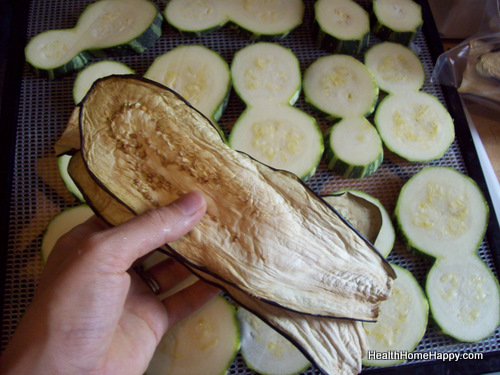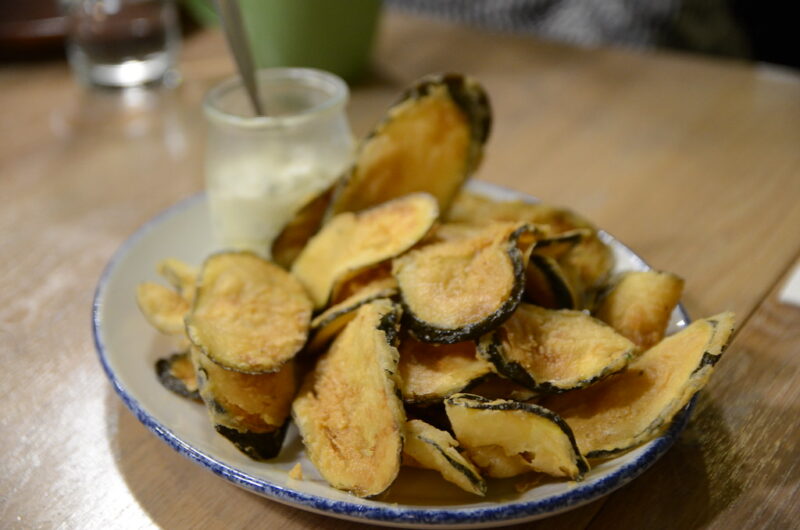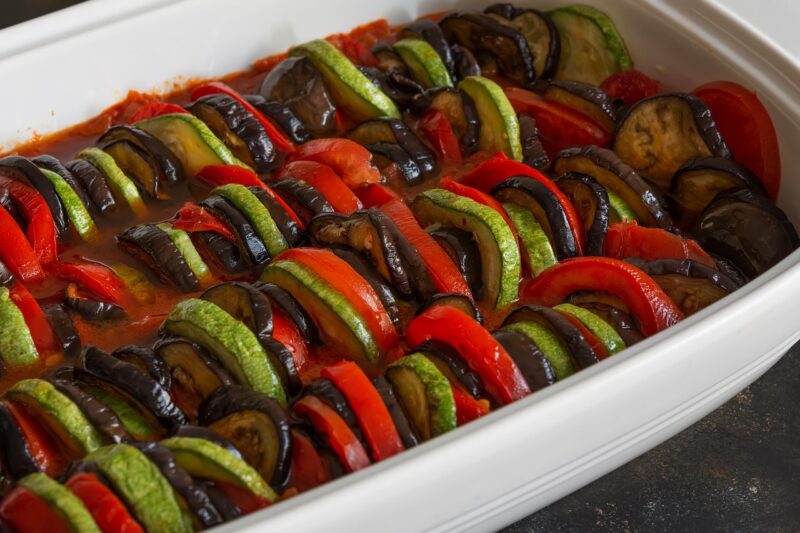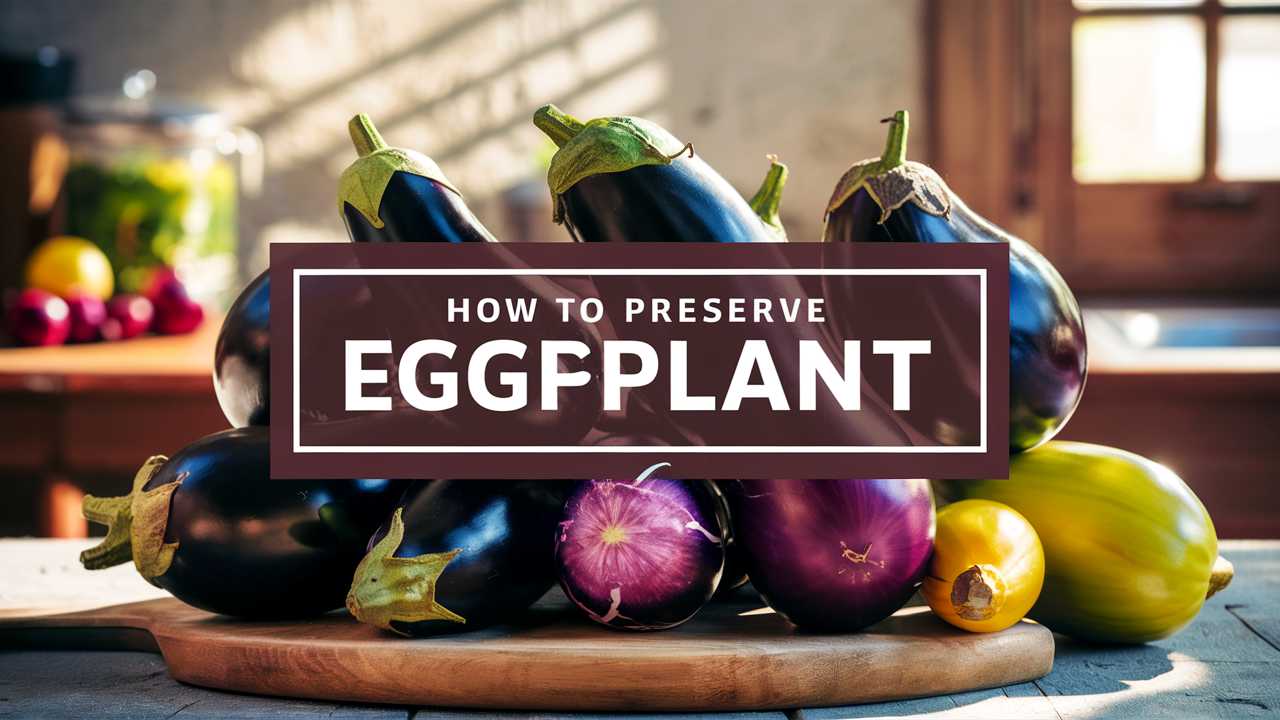Whether you are seeking to enjoy the taste of summer during winter months or simply want to reduce waste from an overflowing harvest, this guide will equip you with all the knowledge you need to effectively preserve eggplant.
Preparing Eggplant for Preservation
Preparing eggplant for preservation is often the make-or-break step in ensuring the best flavor and texture. Regardless of the preservation method you choose, starting with proper preparation is crucial.
Washing and Slicing
Begin by rinsing your eggplants under cold water to remove any dirt or pesticides. After drying, decide how you’d like to slice them based on your preservation method. For freezing, you may want to cut them into cubes or slices; for pickling, consider thicker slices or quartered pieces.
Keep in mind that eggplants can contain bitter compounds, especially if they are older. If using large varieties, salting the slices and letting them sit for about 30 minutes can help draw out any bitterness. Rinse the salted eggplant thoroughly and pat dry before proceeding.
Blanching: A Step Worth Taking
Blanching, a brief cooking process in boiling water followed by immediate cooling in ice water, is particularly useful before freezing eggplant. It helps to preserve color, texture, and nutritional value while reducing bitterness. Blanch slices for about 4 to 5 minutes, then transfer them to an ice bath for the same duration to halt the cooking process.
While some people may view blanching as an extra step they can skip, it truly plays a vital role in enhancing the final product. Think of it as a protective layer that helps maintain the integrity of the eggplant, allowing you to enjoy its full flavor profile months later.
Methods for Preserving Eggplant
When it comes to preserving eggplant, there are multiple paths to explore. Each method offers unique advantages and can cater to different culinary needs. Below are some popular ways to preserve eggplant, each with its personal touch and suggestions.
Freezing Eggplant: A Simple and Effective Method
Freezing eggplant is one of the easiest and most effective ways to extend its shelf life. It allows you to enjoy the taste of fresh eggplant all year round, whether you’re tossing it into a stir-fry or seasoning it for a hearty casserole.
1. Freezing Techniques
Preparation: As mentioned earlier, washing, slicing, and blanching the eggplant is vital before it hits the freezer. After blanching, drain the water well.
Cooling: Spread the blanched slices on a baking sheet in a single layer to cool completely. This prevents the pieces from sticking together during freezing.
Packaging: Once cool, transfer the slices to freezer bags. Be sure to remove as much air as possible to prevent freezer burn, and label bags with dates for reference.
Storage: Frozen eggplant can last for up to 10 to 12 months in optimal conditions.
2. Cooking from Frozen
A wonderful aspect of frozen eggplant is its versatility. You don’t need to thaw it before cooking; just toss the slices directly into your dish. Think comforting ratatouille or a savory pasta bake, letting the frozen eggplant absorb flavors during the cooking process.
Pickling Eggplant: A Flavorful Transformation

Pickling eggplant is a traditional method that elevates the vegetable’s natural flavor while adding an exciting tangy dimension. It is particularly popular in Mediterranean and Middle Eastern cuisines.
1. Preparing the Brine
Ideal Ingredients: Combine equal parts water and vinegar (white or apple cider) along with salt, sugar, and any spices you desire. Garlic, rosemary, peppercorns, and chili flakes can add unique flavor nuances. Simmer this mixture until dissolved.
2. Pack and Process
Packing the Jar: Layer your prepared eggplant slices into sterilized jars. Pour the hot brine over the slices, ensuring they are completely covered. Seal tightly.
Hot Water Bath: For longer shelf life, process your jars in a hot water bath for 10-15 minutes. This seals the jars and makes them shelf-stable.
3. Storage and Enjoyment
Pickled eggplant can be enjoyed in salads, as a side dish, or even as a sandwich topping. Wait at least a week to allow the flavors to meld before indulging. The waiting period may feel long, but the reward of zesty, tender eggplant will be well worth it.
Canning Eggplant: A Commitment to Flavors

Canning can feel like a daunting task, but once you’ve mastered it, it offers a profound sense of accomplishment and a pantry stocked with deliciousness. Here’s a straightforward approach to canning eggplant.
1. The Basics of Canning
Begin with fresh, young, and tender eggplants, similar to your freezing and pickling preparations. Slice or dice as desired, and soak in a brine solution for a few hours to enhance flavor and remove bitterness.
2. Preparing the Pressure Canner
Since eggplants are low in acidity, it’s critical to use a pressure canner for safe preservation. Ensure your canning environment is clean and your jars are sterilized.
3. Filling the Jars
Place your prepared eggplant into the sterilized jars, leaving about an inch of headspace. Pour hot brine or a sauce (like tomato sauce) over the eggplant and seal the jars tightly.
4. Pressure Processing
Follow the manufacturer’s instructions for your pressure canner. Usually, this process involves processing at 10-15 pounds of pressure for about 30-40 minutes depending on your altitude.
After cooling, check the seal and ensure each jar is properly closed. Canned eggplant can last about a year or more in the pantry.
Unique Eggplant Preservation Techniques
While freezing, pickling, and canning are commonly employed methods, other unique preservation techniques can add exciting flavors to your culinary repertoire.
Dehydrating Eggplant: A New Perspective

Dehydrating eggplant is a fantastic option for those who appreciate a crunchy, savory snack or ingredient. Dried eggplant can be rehydrated and added to soups, stews, or sauces.
1. Prepping for Dehydration
Again, rinse and cut your eggplants into uniform slices. Lightly sprinkle with salt and let them rest to extract excess moisture. Pat dry before proceeding.
2. Using a Dehydrator or Oven
If you have a food dehydrator, arrange the slices in a single layer and set it at about 125°F (52°C). It may take 6 to 12 hours to achieve crispness. Alternatively, you can use an oven set to the lowest temperature, leaving the door slightly ajar to allow moisture to escape.
3. Storing Dried Eggplant
Once fully dehydrated and cooled, store the slices in airtight containers in a cool, dark place. They should be stored away from light and heat, and can last for up to a year.
Creating Eggplant Chips: Snack-Worthy Goodness

If you enjoy crunch, making eggplant chips is an exciting way to preserve your eggplant while giving it a contemporary spin.
1. Slicing and Salting
Thinly slice your eggplant, about ¼ inch thick, and dry them thoroughly before salting to draw out water. Let sit for about 30 minutes.
2. Baking or Frying
Baking: Drizzle olive oil evenly over the slices and spread them out on a baking sheet. Bake at high heat (around 400°F or 200°C) until crispy.
Frying: Heat oil to medium-high heat and fry the slices in small batches until golden brown and crispy.
3. Seasoning and Storing
Season your chips with sea salt, garlic powder, or your favorite spice blend before sealing them in a cool, dry container.
Fermenting Eggplant: For the Adventurous Cook
Fermentation, a time-honored preservation method, introduces beneficial probiotics while creating unique flavors.
1. Brine Mixture
Create a saltwater brine; typically, three teaspoons of salt per quart of water is a reliable starting point.
2. Submerging the Eggplant
Cut eggplant into pieces and place them in a jar, ensuring they are fully submerged in brine. Weigh them down with a fermentation weight or clean rocks to prevent exposure to air, which can cause spoilage.
3. Fermentation Process
Let the jar sit at room temperature for a week to several months, depending on your taste preference. The longer it ferments, the stronger the flavor will be.
Once the eggplant reaches the desired taste, store it in the fridge to slow down the fermentation.
Using Preserved Eggplant: Culinary Inspiration

Preserved eggplant opens up an entire world of culinary creativity. Here are some inspired ways to incorporate your preserved treasures into everyday meals.
Ratatouille: A Classic French Dish
Ratatouille, a wonderful medley of vegetables, can be made quickly and deliciously with preserved eggplant instead of fresh. Whether you opt for pickled or canned varieties, simply sauté with onions, bell peppers, and tomatoes for a comfort meal.
Pasta Dishes: Simplicity Meets Richness
Incorporated into a simple tomato sauce, preserved eggplant adds depth and richness. Toss your preserved slices into the sauce just long enough to warm through, then combine with your favorite pasta for a filling dish.
Salads and Sandwiches: Bright and Flavorful
Add cottony preserved eggplant to salads, grains, or sandwiches for a refreshing twist. A simple salad with feta, olives, and pickled eggplant offers a burst of flavor that’s both satisfying and easy to prepare.
Tips for Successful Preservation
While preserving eggplant can be fulfilling, a few tips can enhance your success:
Quality First: Freshness is key; always work with the highest-quality eggplants.
Experiment: Don’t hesitate to try new spices, vinegars, or flavors in your preservation process.
Temperance in Salt and Sugar: While salt and sugar are essential for preservation, overdoing it can compromise flavor. Balance is key.
Labeling: Tightly seal all packaging and label with the method and date. It’s easy to forget what you have after a few months.
Monitor Storage Conditions: Keep all preserved eggplant in cool, dark, and dry locations to extend shelf life.
Final Thoughts: Celebrate Eggplants in Your Kitchen
Preserving eggplant isn’t just about saving leftovers; it’s a joyful celebration of this unique vegetable. By learning various methods to preserve eggplant, you’re not only reducing waste but also exploring countless culinary adventures down the line.
From freezing to pickling, dehydrating to fermenting, the possibilities are endless. Each technique brings a unique flavor, texture, and story to your table. Embracing preservation is embracing sustainability, creativity, and a connection with the cycles of nature.







